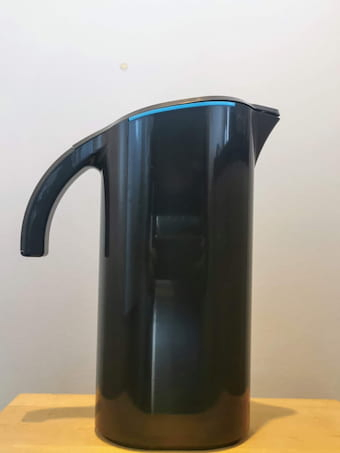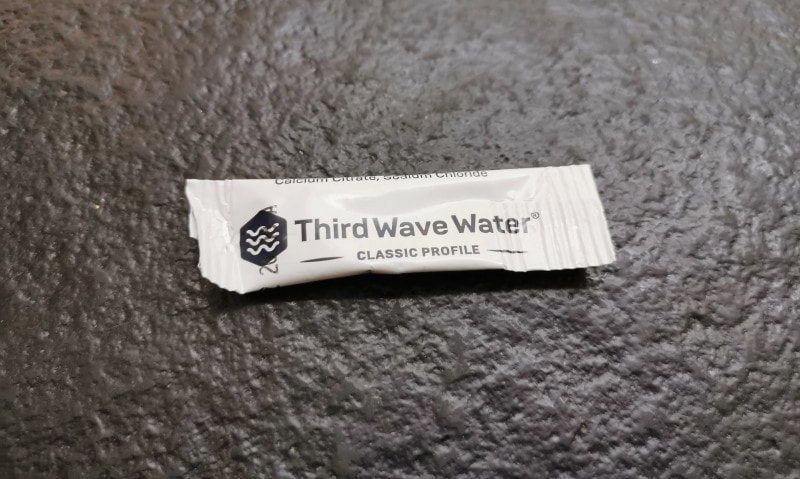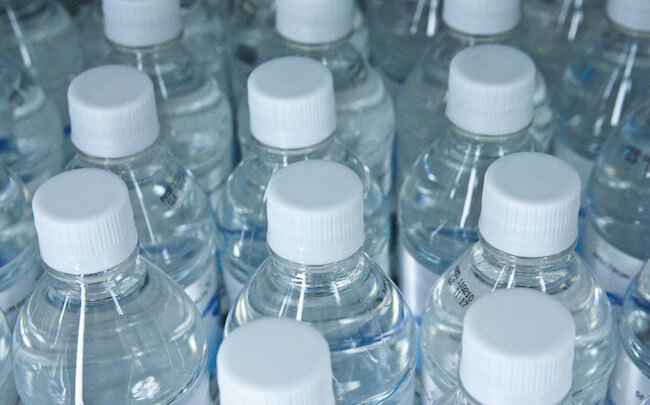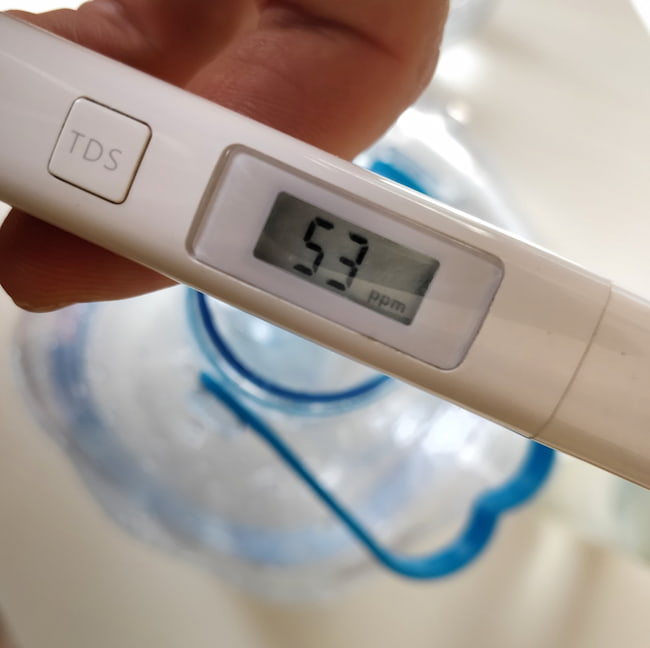You’ll often hear that water is crucial because it’s the main ingredient of a good cup of coffee.
Actually, that’s an understatement:
Water isn’t just an ingredient – it also acts as a solvent.
This means that water is an essential factor in the extraction itself, and as such, should be treated with the same level of respect as your expensive burr grinder or handcrafted Japanese pour over coffee maker.
I had known about the importance of water for a while. Still, it wasn’t before returning home to Denmark after living abroad for an extended period that it dawned upon me just how important water is.
The same specialty coffee that would taste amazing when brewed with bottled water in a different part of the world would suddenly taste dull and lifeless with regular Danish tap water.
I had – without even realizing it – become accustomed to coffees brewed with quality water.
What ensued then was a several-year-long quest to understand water and its impact on coffee. Much of this time in deep frustration. Read this post if you want to avoid a lot of the worst headaches.
⚠️ Please note, I have added some new sections to this article, so if you just want to read my updated thoughts, then click here to go the 2021 section.
- Filter coffee: Aim for water between 30-100 TDS. Find a solution that is convenient AND consistent.
DON’T go out of your way to find the right ratio of hardness to alkalinity. Low TDS = low alkalinity. That alone will often be enough to brew tasty coffee. Alkalinity blocks the fruity notes in coffee. By brewing with soft water you’re already ahead.
Use one of the following solutions:- RO Water + bypass tap water
- RO Water + Minerals concentrates
- Zero Water Filter + minerals/bypass water
- Soft tap water filtered through a filter pitcher
- Bottled water with a low TDS
- Peak Water Filter (Check out my review here)
- Espresso: Machine health is an important consideration when it comes espresso. If you have access to reverse osmosis water or water filtered through a Zero pitcher, you can make “rpavlis” water with a concentrate of potassium bicarbonate.
Otherwise, go for soft water (i.e. under 110 TDS)
The coffee-water bible
Coffee and water is a surprisingly new topic among coffee lovers.
Water is 98,5% of the content of regular coffee and around 90 % of espresso, so obviously, it has a huge impact.
It wasn’t until multiple British barista champion Maxwell Colonna-Dashwood and American chemist Christopher Hendon decided to join forces to solve the water mystery with their 2015 book “Water for Coffee” that something more thorough was published.
The authors researched the different minerals and salt properties and identified two as having supreme extraction properties: magnesium and calcium.
They also found out that the total amount of mineral content in the water is less relevant up to a certain degree. What’s important is the ratio between total hardness and carbonate hardness (also known as alkalinity).
Total hardness is the combined measurement of calcium and magnesium, while alkalinity is the water’s buffering capacity. The research concluded that a 2:1 relationship is optimal for brewing balanced and flavorful coffee.
It’s tough to find a copy of ‘Water for Coffee’ – the book published by Colonna-Dashwood and Hendon, but it’s worth checking out if you’re able to grasp chemistry and complicated science.
What about TDS?
Until the book came out, it was widely believed that ‘total dissolved solids (TDS) was a valuable way to measure and talk about water for coffee. But in fact, TDS is a broad term that includes more or less everything in the water.
According to the two authors, it’s a lot more essential to focus on the relationship between hardness and buffer and the type of minerals.
I think they are right in theory. But in practice, it’s straightforward and easy to use a TDS-meter. It’s more complicated to measure the ratio between hardness and alkalinity.
What to do with this knowledge?
Tap water in most parts of the world just isn’t suited for coffee brewing.
Even if it’s clean and potable, it can still be very high in calcium and bicarbonates. And oftentimes, there will be nasty tasting compounds as well.
That leaves you with a few other options:
1: water filter pitcher

A water filter pitcher from Brita or similar brands can be a decent solution if your tap water is not too hard. If your tap water is less than 200 TDS, you’ll be able to get it down to an acceptable level.
You can even filter your water twice; it sounds a bit low-tech but works well.
If you live somewhere with harder water, a filter pitcher such as the Zero model can be an affordable and practical solution to have 0-TDS water at home. Then you can add some tap water back to the filtered water to get to a desired TDS.
A better solution, at least in theory, is the dedicated coffee filter jug from Peak Water – check out my review here.
Peak can target a specific hardness and TDS leve with a clever dual filtration system. Unfortunately, it has some big downsides, is more expensive, and it looks like only a few shops worldwide will continue to sell the filtration units.
2: Bottled water
Bottled water is a decent solution for home baristas. Volvic is quite popular among home baristas in the US, while ‘Ashbeck’ from Tesco is the UK’s water of choice.
I would encourage you to try a lot of different brands and trust your taste buds.
Usually, the cheaper water in nondescript bottles is better. Sometimes this is referred to just as “purified drinking water”.
Most of the expensive natural spring waters – like San Pellegrino or Evian – are jampacked with minerals, and for that reason, they are not suitable for coffee brewing.

3: Use a pre-made formula
Adding a mineral mix to RO Water has become very popular in the last couple of years.
Third Wave Water is the most famous and widely available one. You open the sachet and add it to a gallon of RO water. Usually, I will only use half of the sachet’s content to dial back the intensity of the brew a bit.
Other brands are available, such as Aquacode, which claims that their mineral mix is sourced “naturally” from deep-sea waters.
I like this solution because it’s both easy and consistent. If you quickly find RO Water or something called “purified drinking water” with a very low TDS locally, then I’d encourage you to give this solution a try.
4: Bypass water
Another option, which a lot of coffee shops use, is to “bypass” water.
Essentially, this means that you have a primary water source that is completely stripped of minerals. This is typically RO Water. Then you add some tap water to add a little bit of hardness and alkalinity to get a more natural taste. If you live somewhere with hard water, you might only have to bypass 10% tap water.
The Coffee Collective in Denmark is doing this, and they aim to land on a total TDS of 30, which is extremely soft.
5: WATER RECIPES
Many home baristas have begun creating their own mineral blends.
First of all, you need a blank canvas to experiment with – some extremely pure water. Realistically that means a TDS around 1-10.
In some countries, it’s easy to find reverse osmosis water (aka RO water), which is very clean.
In other places, such as Scandinavia, it can be a lot harder to find.
Some common ingredients, such as Epsom salt (magnesium) and baking soda (bicarbonate) – can be bought in most supermarkets or health food stores.
Some recipes also use calcium for the hardness. Calcium improves mouthfeel, and in my opinion, it’s more ‘natural’ tasting than magnesium. Ideally, your coffee water should contain both minerals.
Buying all the necessary minerals won’t set you back more than 15 dollars, and you’ll be able to create hundreds of gallons of water.
To create custom water, it’s a good idea to buy a cheap TDS-meter from a place like Amazon (I’d recommend this model).
In theory, it’s attractive to mix your own minerals into brew water, but the result is often nasty. I have tried many of the popular recipes online, and find that they impart an artificial flavor to the coffee. For that reason, I encourage people to settle for a soft water rather than a perfect water with the ideal ratio of GH to KH.
Mineral concentrates
- Espresso water: The basic recipe for “rpavlis” water has become a go-to among home espresso lovers all over the world. It doesn’t cause any scale and the high levels of alkalinity helps to tame an acidic espresso shot.
- Water: 1 liter of distilled or reverse osmosis water
- Potassium Bicarbonate: 0.1 grams
- GH: 0 dGH
- KH: Approximately 2.24 dKH
- Filter coffee: Besides a few very complicated solutions (which I will share more about later), I think you’ll be better off adding bypass water (either tap water or bottled mineral water) to target the GH/KH ideal for your coffee.
Be especially careful with adding a lot of buffer to your brew water. Usually, 5-10 PPM will be sufficient. The same goes with several other popular minerals, such as epsom salt – it can very quickly make the coffee taste unnatural.
It can make sense to add a bit of magnesium chlorides to your brew water. 5-10 PPM can be enough to add a subtle touch of brightness, sweetness and sophistication.
2021 update
Since I wrote this article about coffee water several years ago, I have come to a few new conclusions.
You can still read the rest of the article because it provides some context to the whole debate, but in the following, I’ll summarize my current 2021 “stance,” so to speak.
Flavor first
Maxim number 1: Flavor is more important than theory
When water first became a topic of interest in the world of coffee, much of the discourse revolved around the book “Water for Coffee” and a series of blog posts from Barista Hustle.
The science-heavy book inferred a few “Golden Rules” when it comes to coffee water. Here are some key takeaways from the book:
- A hardness-to-alkalinity ratio of 2:1 is ideal.
- Magnesium and calcium are the most important minerals for coffee extraction.
- Magnesium is more desirable than calcium since it doesn’t cause limescale.
Barista Hustle took these concepts and created a range of water recipes based on the ideas. These recipes mostly relied on combining various concentrates of baking soda and Epsom salt.
However, after much experimentation, I have concluded that I don’t like the flavors that this type of water formulation produces.
A significant amount of magnesium tastes artificial to me. Even with calcium as a secondary source of hardness, I can only tolerate small amounts of magnesium.
Also, high-TDS water recipes often taste too overpowering for my palate. Overall, I prefer water with a lower TDS in the 40-80 range. There can be some exceptions to this, however. With some very light Scandinavian roasts, it can be necessary with a hardness and alkalinity boost to avoid sourness and create a balanced mouthfeel, but this is the exception more than the rule if we’re looking worldwide.
By now, I also know of several famous coffee shops and roasters who have given up on the magnesium and 2:1 paradigm.
Instead, they opt for a soft water with a more natural composition. This is achieved by mixing RO Water with tap water to reach a target TDS, typically in the 30-60 range.
There’s also a fascinating study by Royal Coffee (perhaps one of the best coffee importers in the industry) where different minerals and formulations are blind-tasted by their team of professional cuppers. The result is that calcium is favored over magnesium and that distilled water is ahead compared to unique formulations such as Global Customized and Third Wave Water.
Consistency
Maxim number 2: Water shouldn’t be a variable
The second heuristic is that consistently “good” is better than sometimes “perfect.”
When you begin mixing your own mineral compositions, minor errors can make a significant difference.
Trying different minerals and compositions can go from a small experiment to a never-ending process – I know this from personal experience. The main problem with that is that you will focus more on the water than the coffee in the end.
With some exceptions, I think water should be consistent. Or at least that should be the ideal. Then you can focus on changing variables in your brewing or equipment instead.
Individual solutions
Maxim number 3: It should be convenient
There is no reason to drink the periodic table. Coffee water doesn’t have to be perfect.
As long as it’s not masking the inherent flavor, your goal is achieved.
Of course, that’s easier said than done since so much tap water is terrible for coffee brewing.
How should you achieve this water? That depends on where you’re living.
In some parts of the world, soft water is available at a low cost.
Elsewhere, you might be able to use a water filter pitcher that can clean up and “soften” tap water to a pretty decent level.
Maybe you can get jugs of distilled water. If that’s the case, it also works well to add some type of mineral pre-mix or concentrate. Nowadays there are several brands available.
Find a solution that’s easy AND consistent, and you’ll be able to enjoy your coffee routine a lot more.
Conclusions
My current thinking about coffee water is that it just has to be “good enough.”
And sometimes perfect is the enemy of good enough. Creating water that has the ideal 2:1 hardness-alkalinity ratio can be pretty complicated.
In most instances, water between 30-100 TDS will be more than adequate to let your coffee shine like a bright diamond.
Why?
Because this TDS range automatically ensures that the alkalinity is sufficiently low and will not interfere much with the natural acids in the coffee.
Some coffee people claim that TDS is not a good measurement alone, and in a sense, they are right.
All the dissolved solids could, in theory, be table salt or some weird compound. However, in practice, it’s usually a pretty balanced mix of mostly bicarbonates and calcium, and a sprinkle of magnesium. Add a bit of this to 0-TDS water and you’ll achieve a soft and naturally tasting water in most parts of the world.
Some coffees will be more suited to waters at 30-60 TDS, and others will work better with water that is at the higher end of the spectrum.
Making mineral compositions can be fun, but I don’t think it leads to better coffee.
Don’t boil it
The last tip about water I got recently from the Irish coffee guru and barista champion Colin Harmon. In his book “What I know about running coffee shops,” he explains that you can actually boil the oxygen out of the water and consequently make it less efficient for brewing.
“Water is deoxygenated by boiling, and that makes it quite flat and dull for coffee brewing. Using fresh water and knocking your kettle off just before it boils will ensure the water is at its best,” he explains.
“A simple test you can do at home is to boil a kettle and then leave it a few hours to cool down. Once it’s back to room temperature, re-boil it and make a cup of tea or coffee. Then, very quickly, dump the water from the kettle, replace it with fresh water, boil again and make another cup of tea/coffee for comparative tasting. You should now have two cups, one made with fresh water and another made with re-boiled water, and the results should be quite stark. The freshwater will have more vibrancy, better flavour and should generally be a lot more delicious. The previously boiled water brew by comparison will be flat, dull and lacking flavour.”
* Image: Steven Depolo | Flickr | CC
FAQ
A lot of people just use tap water when brewing coffee in their home. Depending on where you live and your municipal water supply that can be perfectly healthy. However, when it comes to flavor, it’s rarely the best option.
You can use spring water for coffee. However, you definitely want to check that the mineral content of the water isn’t too high. Many brands of spring water are actually way too hard. Usually, it’s better to use cheaper bottled water – the stuff that’s labeled ‘purified water’.
Some people claim that alkaline water is ideal for coffee. It’s probably better than its opposite; acidic water. However, soft water with a neutral pH of around 7 is usually ideal.

